Imagine winding roads that hug dramatic cliffs, pastel colored villages spilling into the bright blue Mediterranean, and the scent of fresh lemons in the warm Italian air.
This is the Amalfi Coast, a 50-kilometer stretch of southern Italy’s shoreline.
In this Amalfi Coast travel guide, you’ll learn when to visit, how to get around, which towns deserve your time, and what experiences will make your trip unforgettable.
The information ahead will help you make the most of this incredible destination.
Planning Your Visit to the Amalfi Coast
Good planning makes all the difference when visiting this beautiful region.
When to Visit
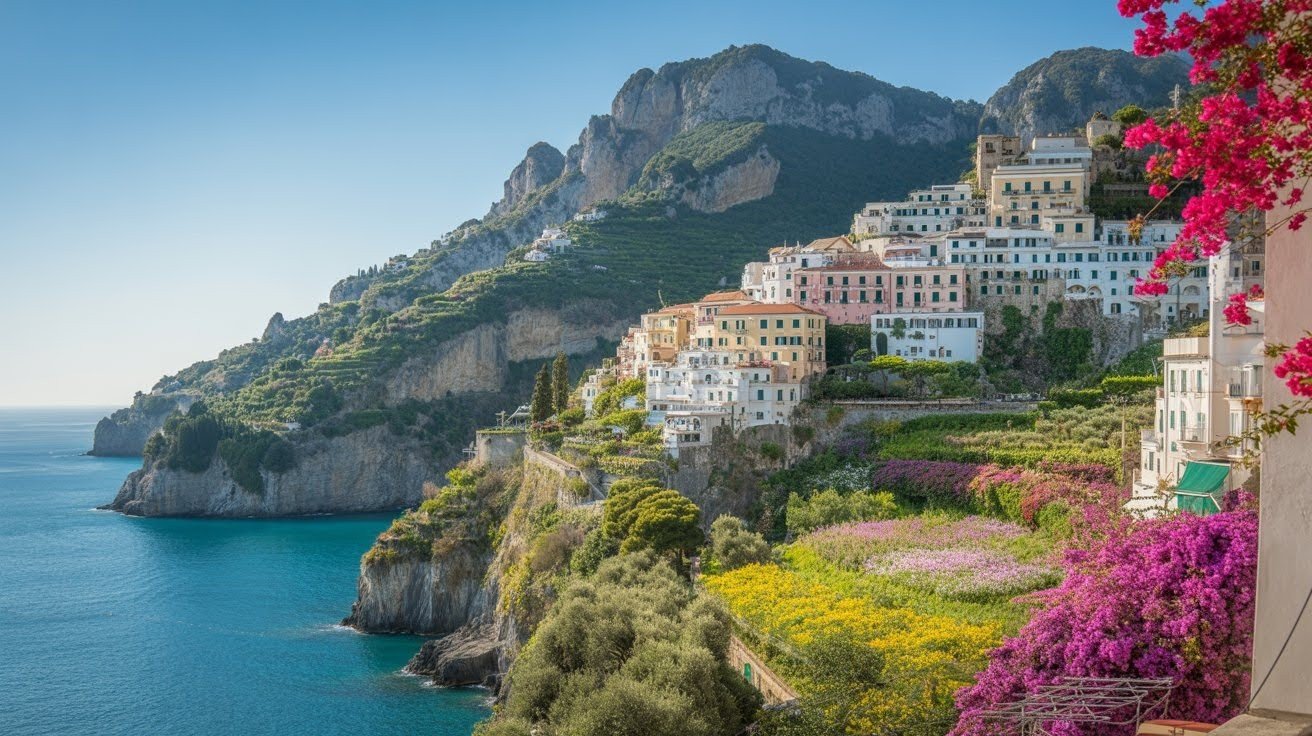
Spring and fall are the sweet spots. From March to May, you’ll find pleasant temperatures, blooming flowers, and fewer crowds. September and October offer similar benefits with warm sea temperatures.
Summer brings peak crowds and intense heat in July and August. Expect packed beaches, higher prices, and heavy traffic. Winter offers low prices and empty streets, but many places close.
Getting There and Around
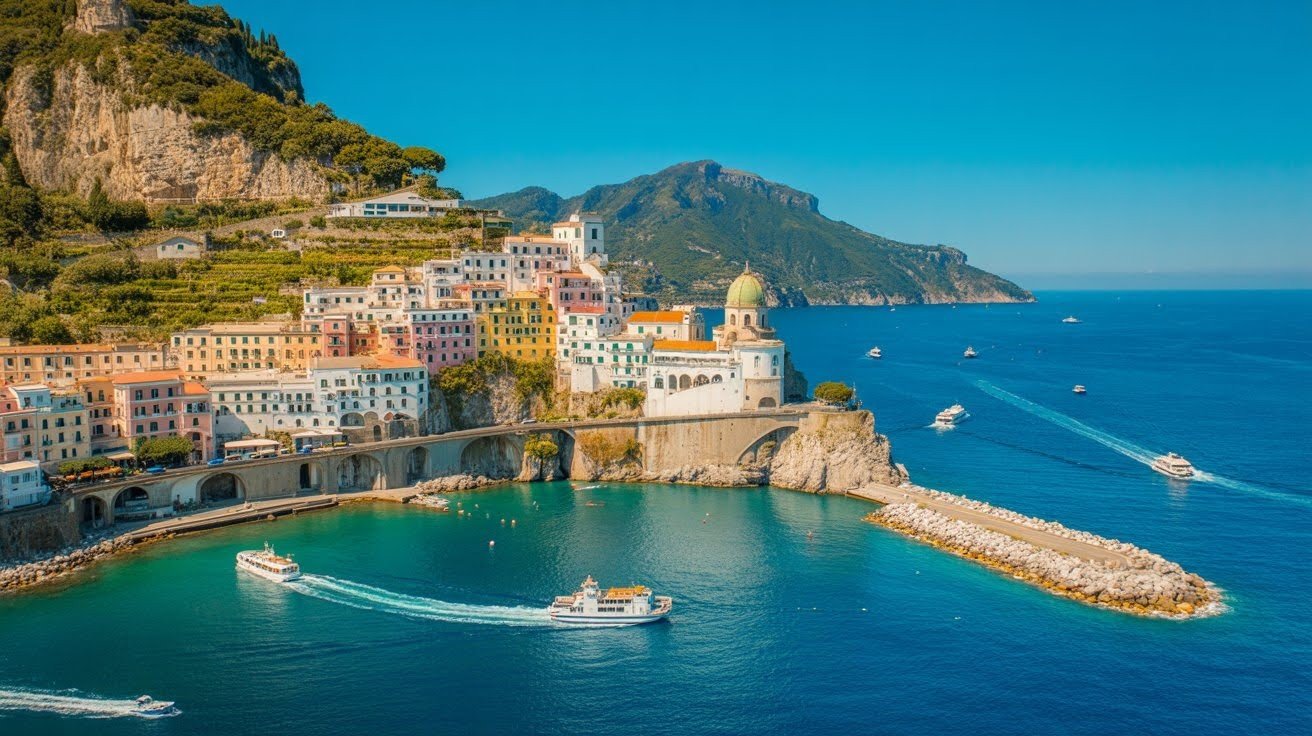
Most travelers arrive through Naples or Rome. Naples sits just 65 kilometers away with quick train access to Sorrento.
Ferries run from April to October and provide the most scenic way to travel. Buses are affordable but crowded during peak times. Driving gives flexibility but comes with narrow roads, limited parking at 5 to 8 euros per hour, and summer restrictions on certain license plates.
Where to Stay
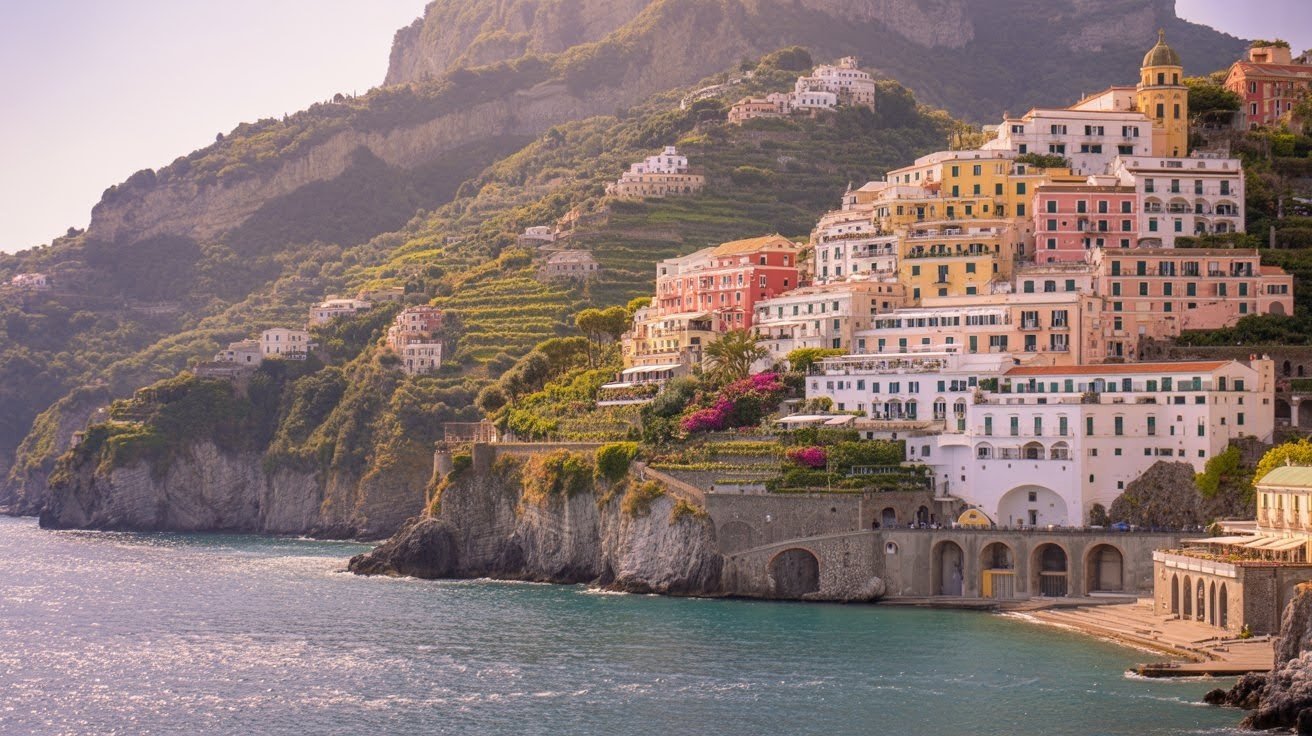
Positano offers postcard-perfect views but comes with premium prices and countless stairs. Amalfi town provides more affordable options with easier beach access. Sorrento sits at the northern end with excellent public transportation and budget-friendly hotels.
For better value, consider Praiano or Castellammare di Stabia. Book accommodations at least three to four months ahead for summer travel.
Must-Visit Towns Along the Coast
Each town along this coastline has its own personality and attractions.
Positano
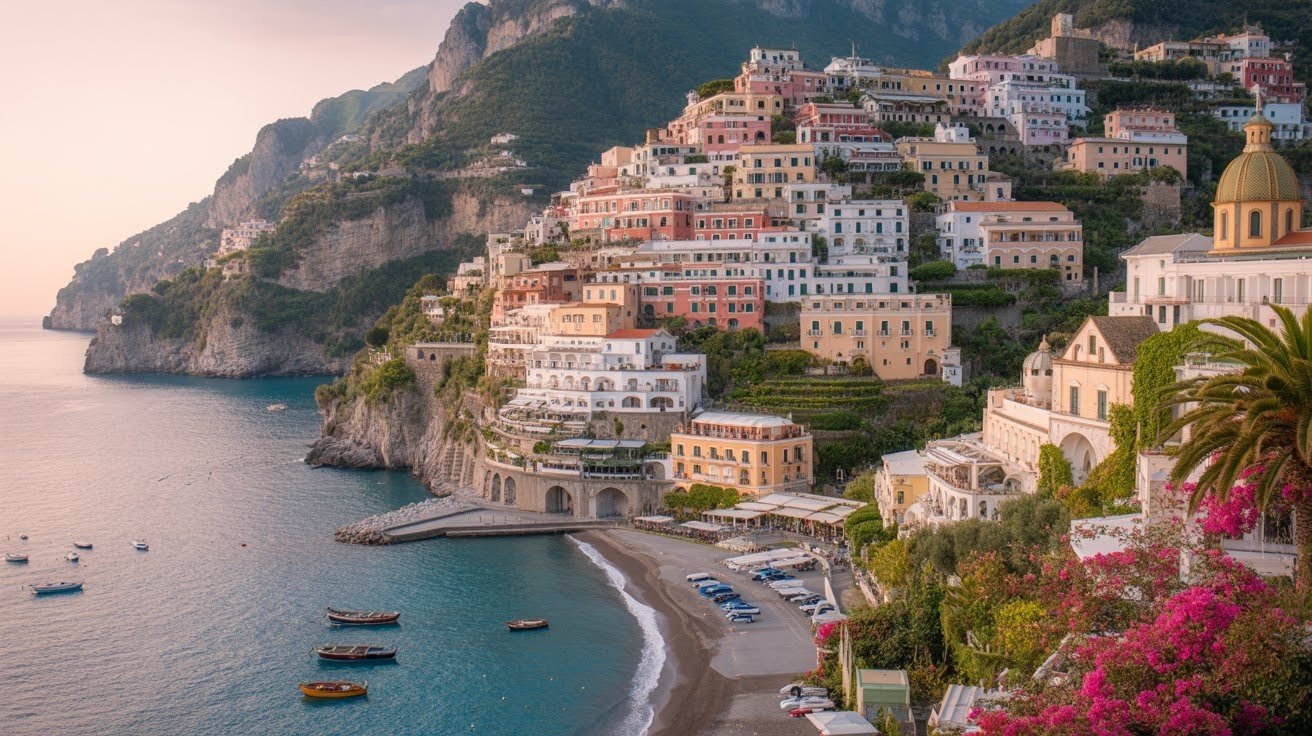
This cliffside village is the most photographed spot on the coast. Pastel buildings cascade down the steep hillside toward a small beach, creating views that look almost unreal. The town is a maze of narrow staircases, boutique shops selling handmade sandals and linen, and restaurants with terraces over the water.
Getting to the beach requires going down hundreds of steps, which means climbing back up in the heat. Parking is extremely limited and expensive, so arriving by ferry or bus makes more sense. Visit early morning or late afternoon for the best light and fewer crowds.
Amalfi Town

The town of Amalfi serves as the commercial center and gives this region its name. The cathedral, with its Arab Norman architecture, dominates the main square and is worth the entrance fee.
Amalfi offers easier beach access than Positano, with less steep walks and more space. The harbor area bustles with ferry traffic and fishing boats, while the main shopping street leads inland with paper shops, ceramic stores, and gelato stands.
Sorrento

Sorrento sits outside the official Amalfi Coast boundaries but serves as an ideal base. The town offers reliable train connections, more affordable dining, and a flatter layout that’s easier to walk.
Villa Comunale park sits on the clifftop and provides one of the best free viewpoints. For authentic meals away from tourist crowds, walk inland from the main square to find trattorias where locals eat. The lemon groves surrounding Sorrento produce some of the best limoncello in the region.
Ravello
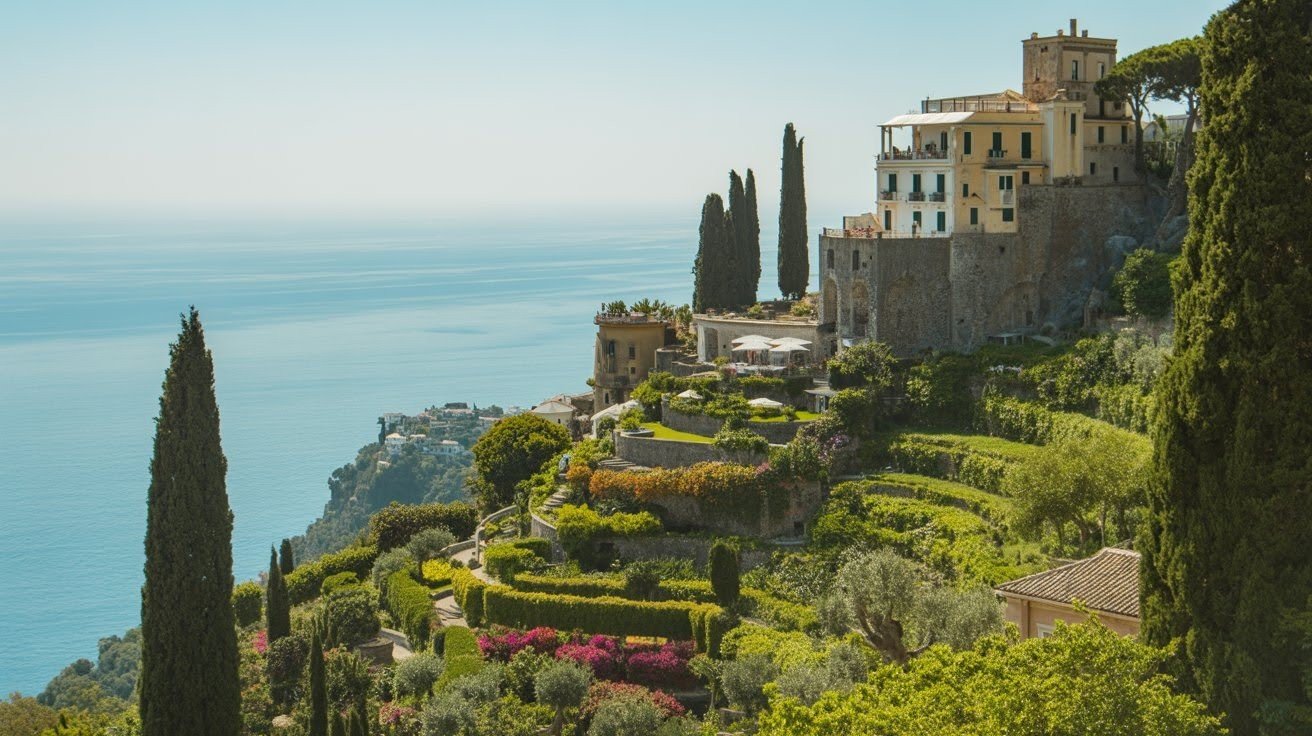
Perched 365 meters above the sea, Ravello offers a quieter alternative to busier coastal towns. This hilltop village attracts visitors seeking classical music concerts and spectacular views.
Villa Rufolo and Villa Cimbrone both feature gardens that seem to float above the coastline. The Terrace of Infinity at Villa Cimbrone ranks among the most photographed spots in Italy. Ravello works perfectly as a half-day trip from Amalfi town, just 7 kilometers away.
Experiences You Shouldn’t Miss
Certain experiences will make your time on the Amalfi Coast truly memorable.
Drive the Amalfi Coast Road
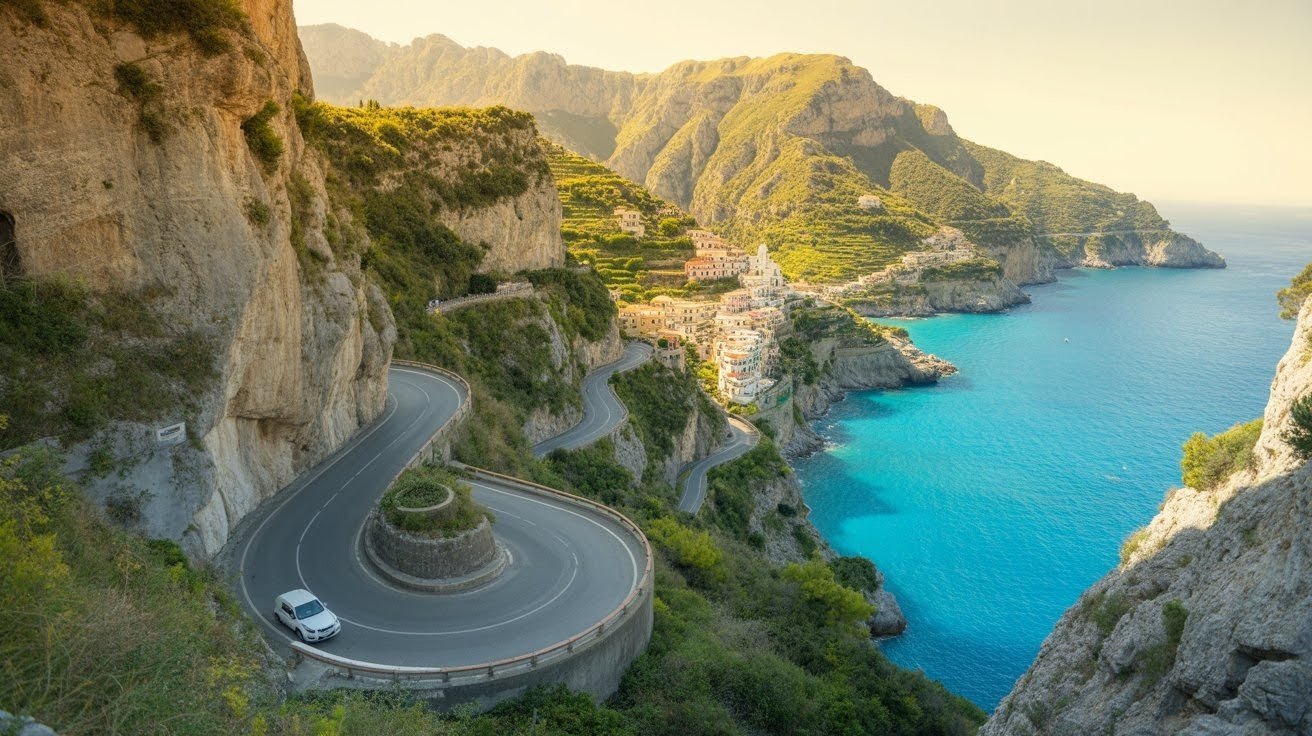
The SS163 Amalfitana ranks among the world’s most scenic drives. This narrow road carved into the cliffside offers constant wow moments as it curves around every bend.
Plan stops at viewpoints like the terrace above Positano and the scenic overlooks between Praiano and Conca dei Marini. If driving yourself, rent the smallest car possible as the road barely accommodates two vehicles in many sections. Many travelers prefer hiring a private driver or taking the bus to avoid driving stress.
Take a Boat Tour
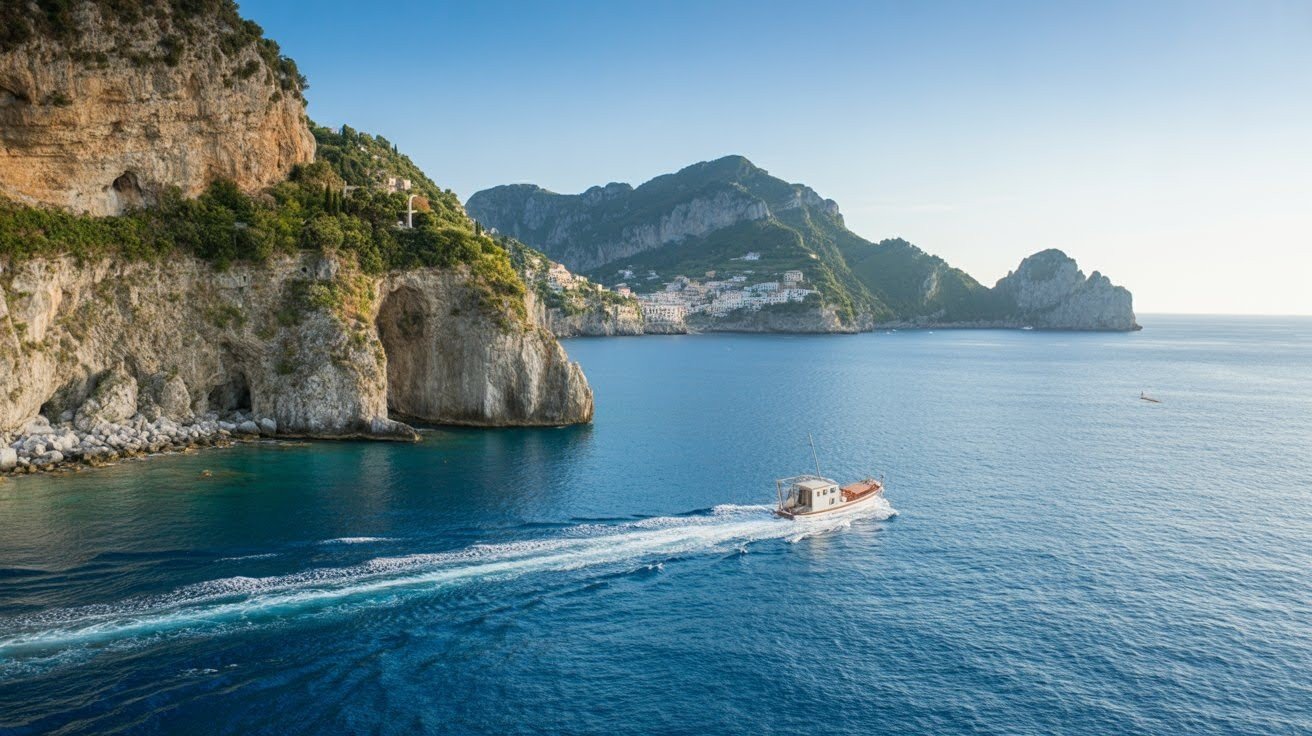
Seeing the coast from the water gives you a different perspective on its dramatic beauty. Boat tours visit hidden caves like the Emerald Grotto, stop at secluded beaches only accessible by sea, and provide swimming opportunities in crystal clear water.
Regular ferry services connect all major towns and cost much less than private tours. You can hop between destinations while enjoying sea breezes and coastal views. Day trips to Capri Island leave from several ports and take about 40 minutes.
Sample the Local Cuisine

Food is central to the Amalfi Coast experience. The region’s cuisine centers on fresh seafood, locally grown produce, and simple preparations. Try traditional dishes like spaghetti alle vongole, fresh mozzarella, and seafood caught that morning.
Lemons grow everywhere here, and locals use them in countless ways. Sample lemon pasta, lemon cake, and of course, limoncello liqueur. Local markets happen weekly in most towns and offer the chance to buy fresh produce, cheese, and regional products directly from farmers.
Visit Pompeii

The ancient city of Pompeii sits less than an hour from most Amalfi Coast towns. This Roman city was buried by Mount Vesuvius in 79 AD and remained frozen in time. Walking through the preserved streets and buildings provides an incredible window into ancient life.
Visit early morning or late afternoon to avoid crowds and intense heat. The site has little shade, so bring water, sunscreen, and a hat. Getting there by train from Sorrento takes about 30 minutes and costs just a few euros.
Practical Tips for a Smooth Trip
Following these tips will help you avoid common problems and make the most of your visit.
- Pack light due to stairs and hills everywhere. Dragging heavy luggage up steps in the heat is miserable.
- Bring cash for parking, tolls, and some transportation. Many small shops prefer cash over cards.
- Book accommodations early, especially for the summer. The best places fill up three to four months in advance.
- Check ZTL zones if driving to avoid fines. These restricted areas only allow resident vehicles.
- Stay hydrated and seek shade during hot months. Take breaks indoors during the afternoon heat.
- Reserve sunbeds or beach access in advance during peak season. Popular beach clubs fill up quickly.
- Look beyond the main tourist areas for better value. Side streets have excellent restaurants with lower prices.
- Consider travel insurance for peace of mind. Coverage protects you from unexpected costs.
These preparations will help ensure your Amalfi Coast experience goes smoothly.
Conclusion
The Amalfi Coast delivers an experience that stays with you long after you return home. From colorful villages clinging to cliffsides to fresh seafood paired with local wine, every moment offers something special.
This Amalfi Coast travel guide has covered the essential information you need for planning a successful trip. Good planning makes everything easier, but leaving room for spontaneity allows for unexpected discoveries.
The combination of natural beauty, rich history, delicious food, and warm Italian hospitality creates memories that last a lifetime. Start planning your visit today.
Frequently Asked Questions
How Much Does a Trip to the Amalfi Coast Typically Cost?
Budget travelers can manage on 100 to 150 euros daily. Mid-range visitors spend 200 to 350 euros per day. Luxury travelers often exceed 500 euros daily. Save money by visiting during the shoulder seasons.
Can You Swim at Beaches Along the Amalfi Coast?
Yes, swimming is possible from May through September. Public beaches are free but crowded, while private beach clubs charge 15 to 30 euros. The best beaches include Positano, Marina Grande in Amalfi, and Fornillo Beach.
What Should I Pack for the Amalfi Coast?
Pack light clothing, comfortable walking shoes, swimwear, sunscreen, and a hat for summer. Spring and fall require layers and a light jacket. Bring modest clothing for churches and an adapter for electrical outlets.
Are There Hiking Opportunities on the Amalfi Coast?
The Path of the Gods between Positano and Praiano offers the most famous hike with incredible views. The trail takes 3 to 4 hours and requires moderate fitness. Spring and fall provide the best hiking weather.
How Accessible Is the Amalfi Coast for People With Limited Mobility?
Accessibility presents challenges due to steep terrain and countless stairs. Amalfi town and Sorrento offer the flattest areas with better access. Positano and Ravello involve significant stair climbing requiring careful planning.

